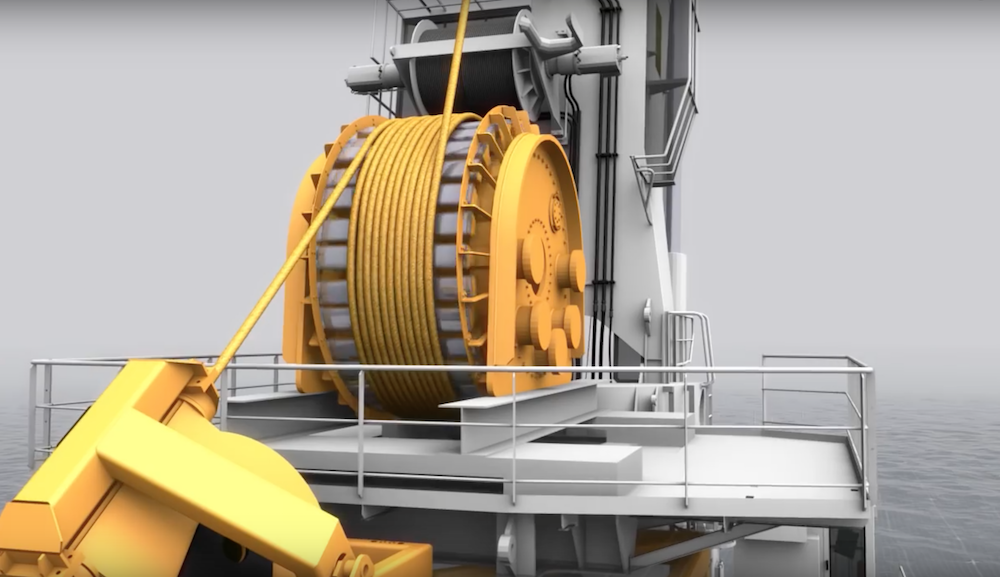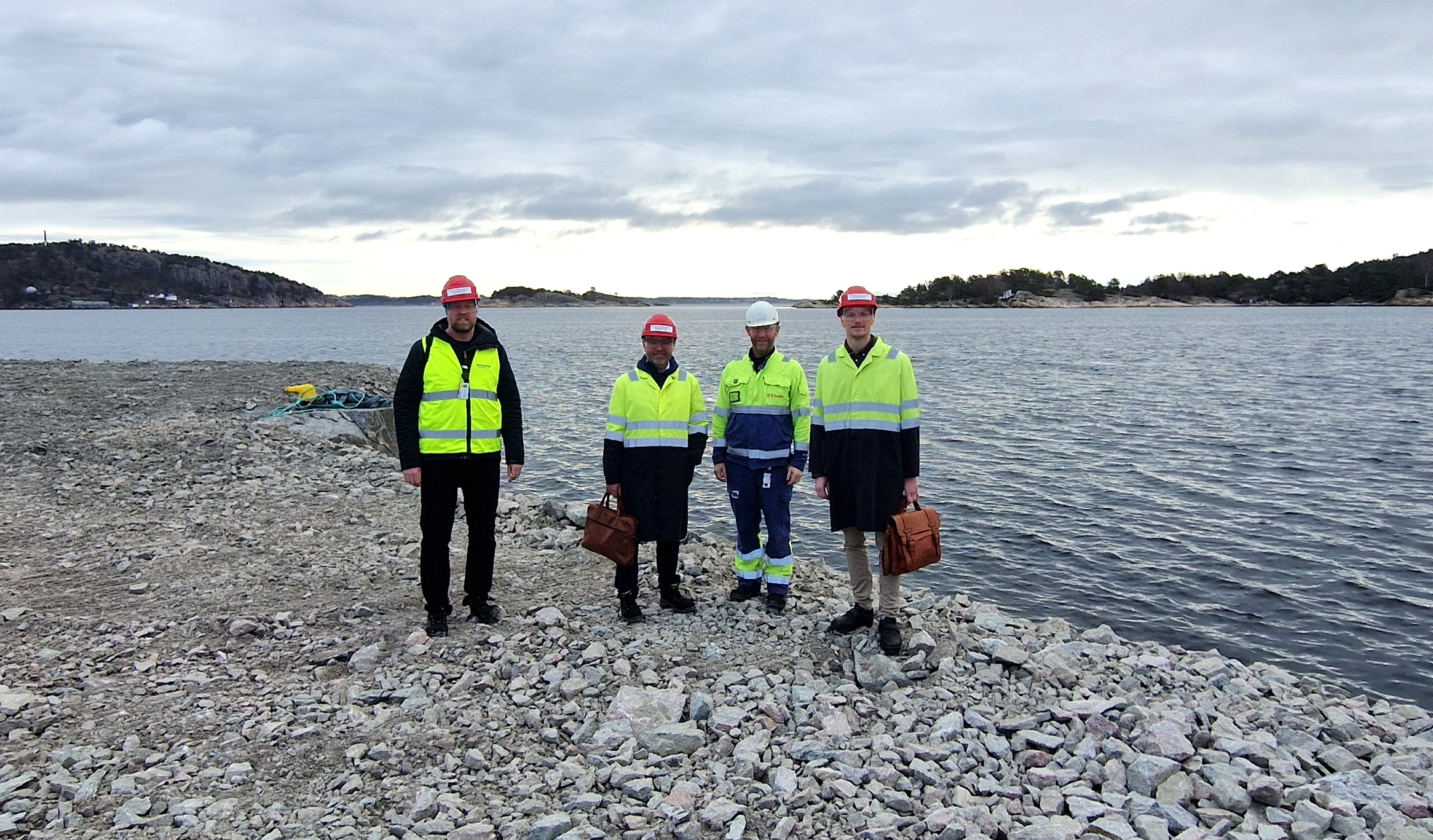The modular upgrade replaces the crane’s original steel wire rope with high-performance synthetic fiber rope.
Fiber rope’s great advantage is that it weighs virtually nothing in water, so regardless of the length of rope paid out; it does not add anything to the load experienced by the crane. This is in complete contrast to wire rope, where the increasing weight of wire paid out progressively and seriously limits the load permissible in relation to depth.
“MacGregor is always searching for new solutions that deliver a competitive edge for our customers,” says Gaute Sjusdal, Director of Advanced Offshore Solutions, Global Lifecycle Support at MacGregor. “By employing this fiber rope technology, a crane is able to use its full lifting capacity at maximum depths, so a smaller crane and vessel can be used for more assignments. The fiber rope crane can lift loads at practically any depth that is required, allowing these vessels to bid on a wider range of contracts.”
Effectively, a 100-tonne fiber rope crane has the same lifting capacity as: a 150-tonne crane with steel wire rope, lifting at a depth of 2,000 meters, a 200-tonne crane with steel wire rope, lifting at a depth of 3,000 meters and a 250-tonne crane with steel wire rope, lifting at a depth of 3,500 meters.
QUICK INSTALLATION MINIMIZE DOWNTIME
The retrofit system is designed in modules for rapid installation. It includes a deepwater capstan traction device, which replaces the crane’s original main winch and overcomes the problems traditionally associated with handling fibre rope. The system also includes a low-tension fiber rope storage drum.
The fiber rope can be inspected for wear, internally and externally. The ability to splice in new sections adds great flexibility to the system. “While the entire rope can be replaced if necessary, damaged sections can easily be replaced and the length can be increased as required,” says Sjusdal. “Transportation is simple and requires no special equipment. In contrast, 3,000m of steel wire rope poses some significant challenges and has special transportation, handling and spooling requirements. With its low weight, a synthetic fiber rope can be shipped in a normal container; there is no need for a drum. Also unlike wire rope, fiber rope does not require lubrication, eliminating a source of pollution.”
“The crane will be continuously connected to a monitoring system, which delivers real-time data used to detect conditions that could lead to a breakdown. We will distribute operational parameters to our customers, to ensure that the equipment works to its best potential,” Sjusdal notes.




